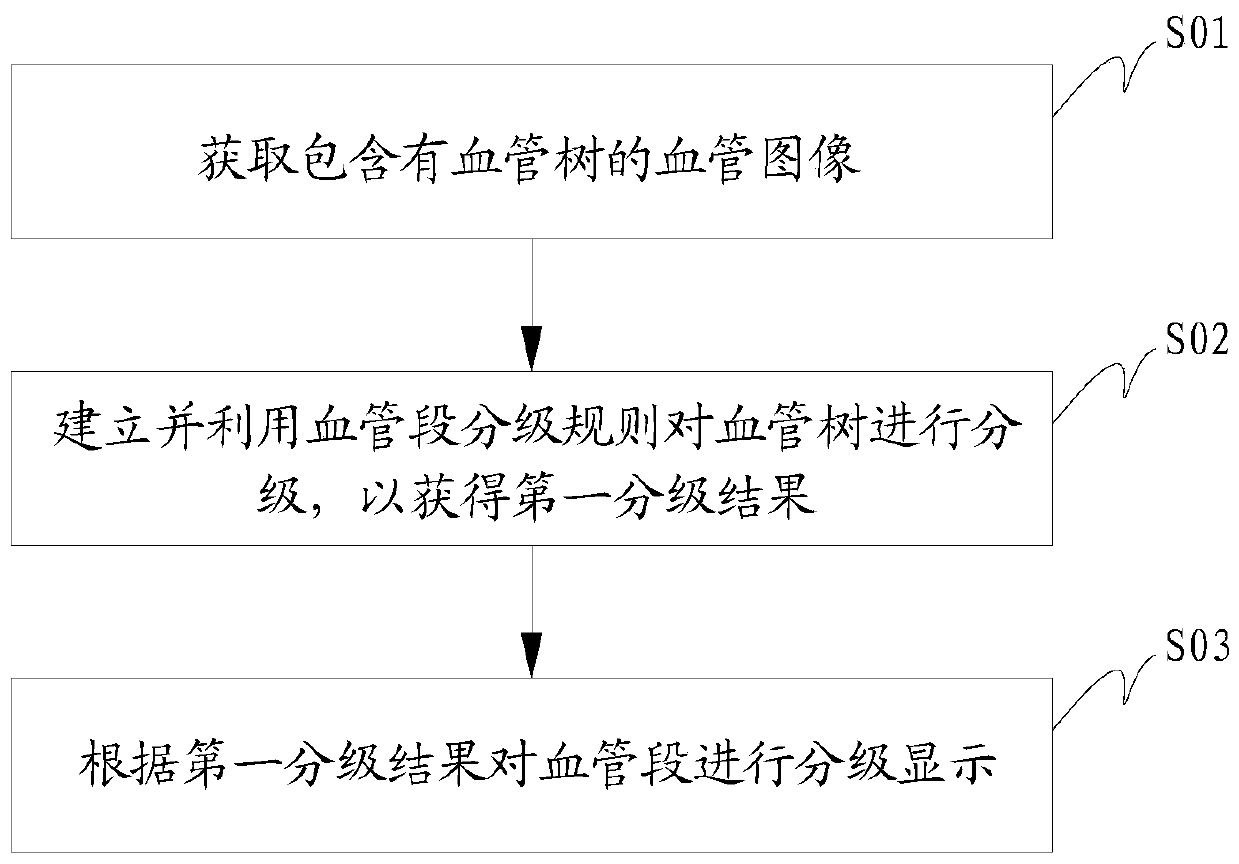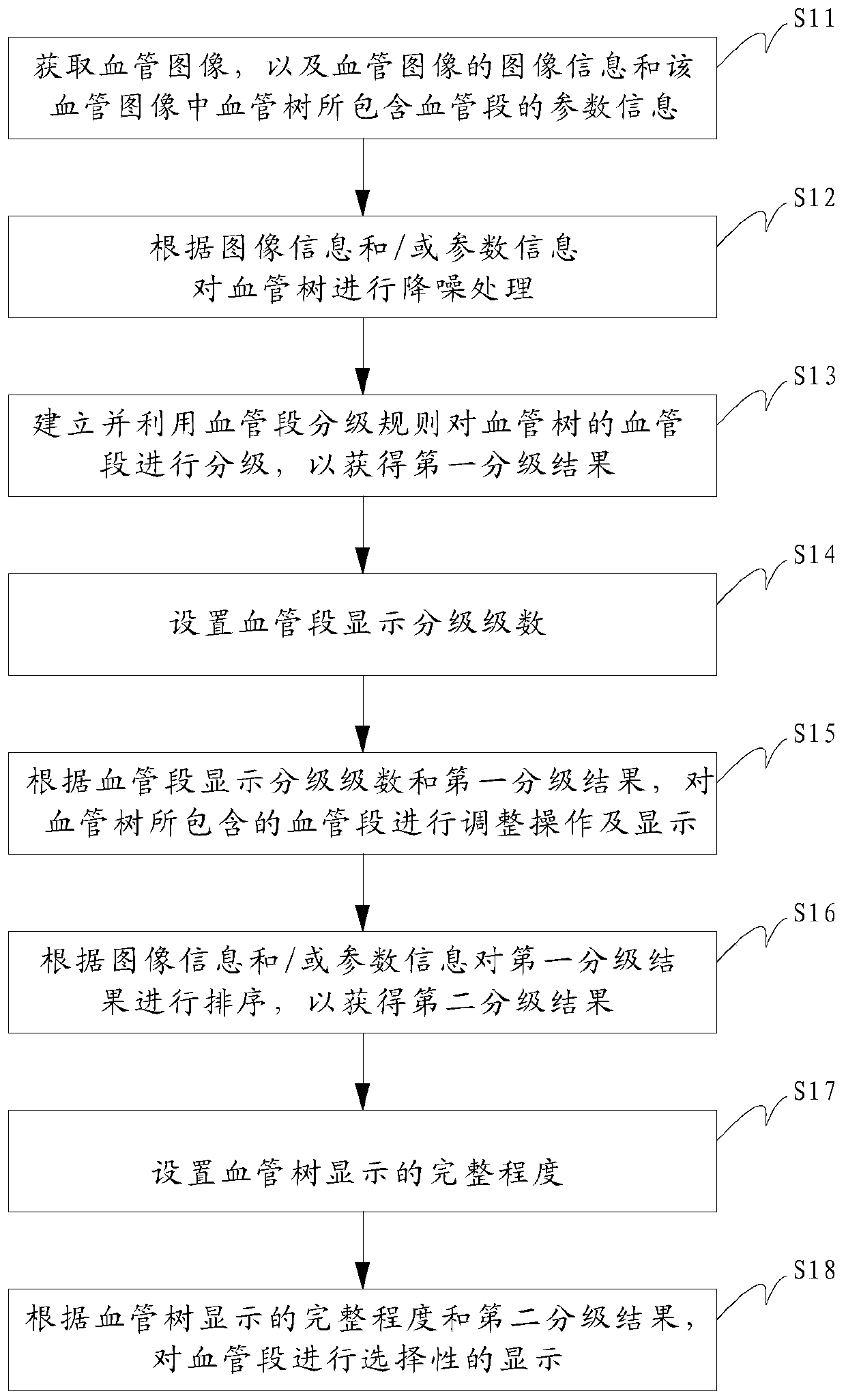Blood vessel image processing method, interaction displaying method and computer device
A technology of blood vessel image and processing method, which is applied in the directions of image data processing, calculation, image analysis, etc., and can solve problems such as inability to meet the display requirements of segmentation and extraction results of different application scenes, single blood vessel richness rules, etc.
- Summary
- Abstract
- Description
- Claims
- Application Information
AI Technical Summary
Problems solved by technology
Method used
Image
Examples
Embodiment Construction
[0089] In order to make the object, technical solution and advantages of the present invention clearer, the present invention will be further described in detail below in conjunction with the accompanying drawings and embodiments. It should be understood that the specific embodiments described here are only used to explain the present invention, not to limit the present invention.
[0090] In the embodiment of the present application, a method for processing blood vessel images is provided. In different application scenarios, according to the requirements of different operators for the blood vessel segments contained in the blood vessel tree presented in the blood vessel image, the processing method can be performed independently. The selected display can also enhance the richness of image display; specifically:
[0091] figure 1 It is a schematic flowchart of a method for processing blood vessel images in blood vessel images in an optional embodiment. Such as figure 1 As s...
PUM
 Login to View More
Login to View More Abstract
Description
Claims
Application Information
 Login to View More
Login to View More - R&D
- Intellectual Property
- Life Sciences
- Materials
- Tech Scout
- Unparalleled Data Quality
- Higher Quality Content
- 60% Fewer Hallucinations
Browse by: Latest US Patents, China's latest patents, Technical Efficacy Thesaurus, Application Domain, Technology Topic, Popular Technical Reports.
© 2025 PatSnap. All rights reserved.Legal|Privacy policy|Modern Slavery Act Transparency Statement|Sitemap|About US| Contact US: help@patsnap.com



